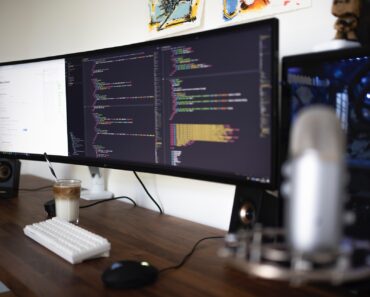If you’ve invested in a high-refresh-rate monitor, such as a 144Hz display, but find that it’s only operating at 60Hz, frustration can set in. Fear not! This troubleshooting guide will walk you through potential solutions to get your monitor back to its silky-smooth 144Hz goodness.
1. Check Your Graphics Settings
- Navigate to your computer’s display settings and ensure that your graphics card is set to the desired refresh rate. Sometimes, default settings might limit your monitor to a lower refresh rate.
Pro Tip: In Windows, right-click on the desktop, select “Display Settings,” and navigate to the “Advanced Display Settings” to adjust the refresh rate.
2. Update Graphics Drivers
- Outdated or incompatible graphics drivers can hinder your monitor’s performance. Visit the official website of your graphics card manufacturer and download the latest drivers for your specific model.
3. Inspect the Cable Connection
- Ensure that you are using a cable that supports the desired refresh rate. For higher refresh rates, DisplayPort or HDMI 2.0 cables are recommended. Check for any loose connections and consider trying a different cable.
4. Monitor Compatibility
- Confirm that your monitor is indeed capable of running at 144Hz. Some monitors may require specific settings or firmware updates to unlock higher refresh rates.
5. Check Windows Resolution Settings
- In some cases, changing the screen resolution may impact the available refresh rates. Adjust the resolution in your display settings to see if it unlocks the desired refresh rate.
6. Monitor OSD Settings
- Access your monitor’s On-Screen Display (OSD) settings using the buttons on the monitor itself. Navigate to the display or system settings and ensure that the correct refresh rate is selected.
Important Note: Always consult your monitor’s manual for specific instructions on accessing and navigating the OSD.
7. Graphics Card Control Panel
- If you have an NVIDIA or AMD graphics card, use their respective control panels to manage display settings. These panels often provide additional options for adjusting refresh rates.
8. Test with Another Device
- Connect your monitor to another device, such as a laptop or a different computer, to rule out issues with your primary system. This helps identify whether the problem lies with the monitor or the computer.
Remember, resolving the 144Hz monitor showing 60Hz issue may involve a combination of these steps. Patience and methodical testing will help you identify the root cause and enjoy the full capabilities of your high-refresh-rate display.
Disclaimer: This article is for informational purposes only and does not replace professional technical advice. If issues persist, consider seeking assistance from your device manufacturer or a qualified technician.






